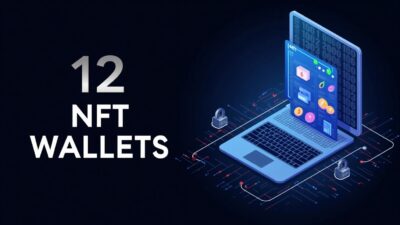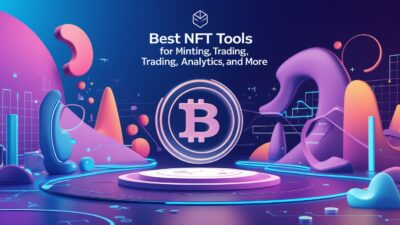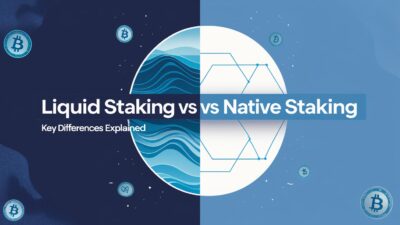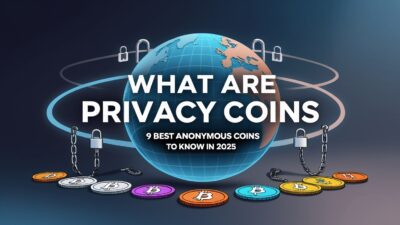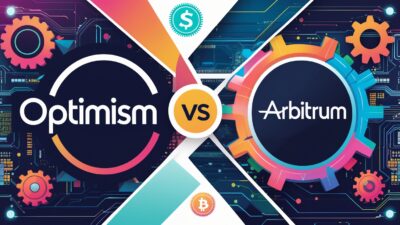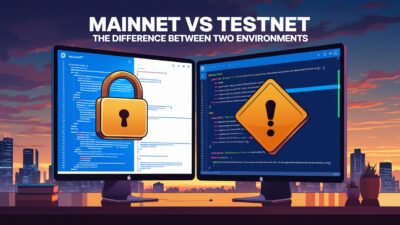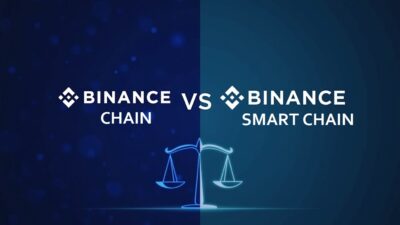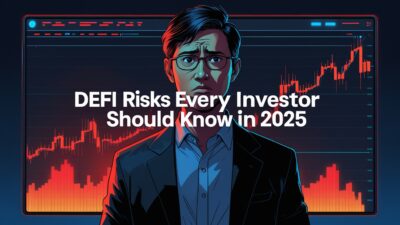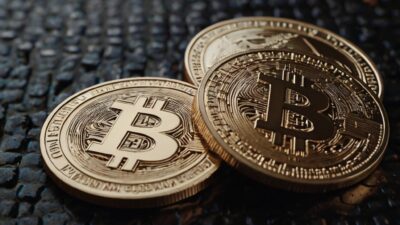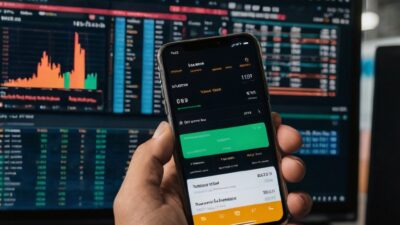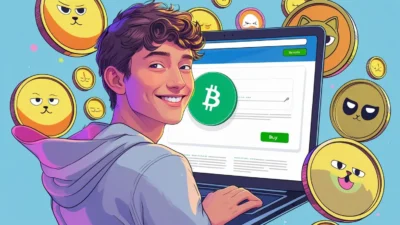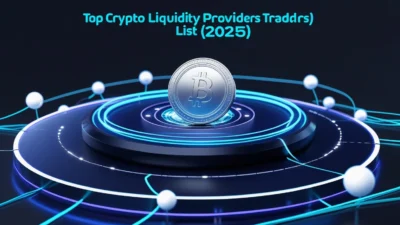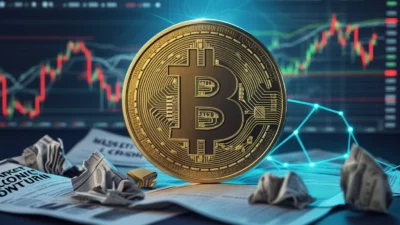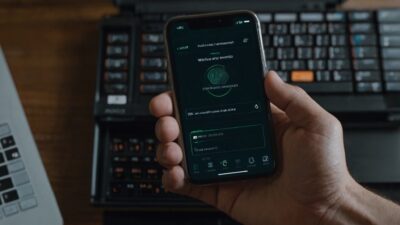Bitcoin, Ethereum, and other blockchains, along with the tokens representing them, promised decentralization, financial freedom, and unprecedented returns. Some people got them. Others didn’t.
With great promise comes great peril, right? Notice how we carefully skirted quoting Spider-Man. It was a lot of work. But we got there.
No area of crypto embodies the above concept better than a rug pull. These scams lure investors with flashy promises, only for the creators to vanish with the funds, leaving shattered dreams in their wake.
The full list of rug pulls in crypto is too much for a single piece of content. But we can discuss some of the biggest rug pulls in crypto. From multi-billion-dollar frauds to schemes that went viral overnight, rug pulls have taught us some harsh lessons about the dangers of unchecked trust in the digital realm. To date, these are ten of the largest crypto rug pulls in history. Use crypto’s unfortunate past to safeguard your investments in the present.
What is a Crypto Rug Pull?
How can someone determine when a crypto project is likely to be a rug pull? There is no surefire way to know. For many users, rug pull risks are an inherent part of investing in cryptocurrency. Luckily, that’s starting to change.
That being said, some red flags signal a potential “crypto rug pull”. So what is it exactly? And what does it entail?
A rug pull in the crypto world is when the creators of a cryptocurrency or decentralized finance (DeFi) project suddenly withdraw all liquidity, leaving investors high and dry. Seriously. It’s just gone. You can be looking at a one-minute chart and watch it go all the way to zero in just a few candlesticks. It’s that fast.
These scams often begin as legitimate-looking, supported by a white paper, social media buzz, and promises of groundbreaking innovation. It’s how they lure users in. But as soon as enough unsuspecting investors pour in their funds, the creators “pull the rug,” disappear with the money, and leave the hopeful enthusiasts with worthless tokens.
Common characteristics of rug pulls:
- Unrealistic promises of returns — sure, some DEXs offer high APRs, but those pools are subject to some pretty intense volatility, so the rewards balance out. Additionally, the tokens offered as a reward for providing liquidity are often highly volatile themselves.
- Anonymous creators or shadowy team members — the days of being an undoxxed crypto dev are pretty much over.
- Lack of third-party audits or due diligence
- Sudden project liquidation or token collapses
Bottom line? Not everything that glitters is Bitcoin. Wow. We just impressed ourselves. Don’t be surprised if we use that one again! Now, on to the top ten most shameful list of rug pulls in crypto to date.
Biggest Rug Pull Examples in Crypto History
Here is our list of the biggest rug pulls in crypto. At least…so far. Hawk. Tuah. And no, that one didn’t cut.
1. OneCoin (2014–2016) – $4 Billion
Examples of crypto rug pulls aren’t hard to find. But to walk away with billions and never be caught? That’s just plain bonkers.
OneCoin promised to revolutionize finance but turned out to be one of the largest Ponzi schemes in crypto history. It ultimately turned out to be the worst crypto rug pull ever.
Headed by Ruja Ignatova and Karl Greenwood, it claimed to be the “Bitcoin killer,” luring in investors worldwide with aggressive multi-level marketing tactics. But these guys weren’t hustling essential oils for a couple of hundred bucks. They were raking in billions.
They also weren’t using blockchain. They were essentially operating their private token scheme, using new investor money to pay off early investors. It was both a Ponzi and a pyramid scheme, all wrapped into one.
By the time regulators cracked down in 2017, Ruja had disappeared with $4 billion. To this day, she remains one of the FBI’s most-wanted fugitives.
2. BitConnect (2016–2018) – $2.4 Billion
“Invest, hold, earn!” was BitConnect’s catchy mantra, coupled with promises of guaranteed returns. Founded by Satish Kumbhani, the company claimed to use a proprietary trading bot to profit from BTC volatility. Users “lent” their BTC to Bitconnect and received their token as a reward. But the bot didn’t exist. And the reward token was junk.
Investors piled in, blinded by the seemingly unstoppable rise of its native token, BCC. Sadly, the entire project operated as a classic Ponzi scheme. The collapse wiped out billions, and many legal battles continue against those involved. However, Kumbhani is still on the run.
3. Thodex Exchange (2021) – $2 Billion
Thodex was one of Turkey’s largest crypto exchanges before its founder, Faruk Fatih Özer, vanished overnight, taking $2 billion of user funds. Everything was going fine, but then, one day, it was all over. Classic rug pull. The exchange shut down, and users were unable to access the platform to retrieve their funds.
Thousands of customers were left stranded, and authorities worldwide launched manhunts to bring Özer to justice. He was caught and sentenced to nearly twelve thousand years in jail. A bit overkill, if you ask us. But the Turkish government wanted to set an example. And they did.
This is one of the biggest crypto rug pulls, but it’s also the first on our list of rug pulls in crypto where the perpetrator was brought to justice. And that makes us happy.
4. AnubisDAO (2021) – $60 Million
AnubisDAO was one of many projects riding the wave of decentralized autonomous organizations, promising high returns through liquidity pools, rebases, and offering looping leverage.
However, less than 24 hours after launching, its anonymous creators drained 13.5k ETH ($60 million at the time). Despite widespread outrage, the individuals behind AnubisDAO were never identified. User funds were laundered via Tornado Cash, and that was the last anyone saw of them.
During this time, numerous sketchy projects claiming to be DAOs emerged, basing their website UI on TimeWonderland and OlympusDAO. Many users gamified the rug pull, trying ot get in, make some money, and get out before the team stole everyone’s cash.
5. Meerkat Finance (2021) – $31 Million
Meerkat Finance collapsed just hours after its launch on the Binance Smart Chain. The team took to social media to claim it has been hacked.
But after some digging, internet detectives discovered that the money was drained from vaults using private keys that only the creator has access to.
Shortly after that, the website was taken down, and social accounts were deleted. The anon devs walk away with over $30 million. No one knows who they are, and they’ll never be brought to justice.
6. DeFi100 (2021) – $32 Million
DeFi100 promised investors a share in the booming decentralized finance market. But once creators had secured $32 million in funds, the website displayed the chilling message, “We scammed you guys, and you can’t do <expletive deleted> about it.”
If that doesn’t make your skin crawl, nothing will!
7. Baller Ape Club NFT (2022) – $2.6 Million
JPEGs aren’t immune to rug pulls. And unfortunately, they aren’t the only NFT project on our list of rug pulls in the crypto space.
Baller Ape Club rode the NFT trend on Solana, which was the premier NFT platform at the time. The team sold out, took the money, and deleted everything, leaving broken promises, worthless JPEGs, and thousands of ripped-off investors in their wake
But this one has a silver lining. Homeland Security was able to track down Le Ahn Tuan, the founder of the project, and charge him with fraud. We couldn’t find any recent updates, but according to the information we found from a couple of years ago, he faces up to 40 years in prison.
8. SaveTheKids Token (2021) – $2 Million
A rug is a rug. But this one falls under the category of “pump and dump” as well. Of all the crypto rug pull examples out there, this one is the most egregious — and for multiple reasons.
This fake charity token grabbed attention with endorsements from famous influencers and promises to “help underprivileged children.”
The founders, known only as “Manny” and “H,” recruited influencers to help push the project. It had an “anti-whaling” mechanism that limited the number of tokens that could be sold from the same wallet within a 24-hour period. The founders changed it to 60 seconds at launch, dumped everything, and walked away.
After an investigation by YouTuber Coffeezilla, it was discovered that the streaming group called FaZe was the masterminds of the rug. However, no charges were ever filed.
9. Squid Game Token (SQUID) (2021) – $3.3 Million
Riding the wave of Netflix’s Squid Game popularity, this token hyped itself as a real-life counterpart to the show’s dystopian games. It was going to be a first-of-its-kind crypto game that everyone wanted to be a part of — think Axie Infinity with an innovative twist.
Investors piled in, with the token surging to $2,861 — probably because there wasn’t any way to sell the token! Suddenly, the creators liquidated their holdings and vanished, leaving thousands of investors with useless tokens.
10. Frosties NFT (2022) – $1.3 Million
8,888 NFTs. Animated ice cream-themed cuties? What NFT collector wouldn’t want to get in on that action?
Frosties NFT promised sweet rewards through an enticing roadmap. However, just as funds poured in, the creators pulled a chilling rug over their audience. Their only message after stealing funds and shutting down the website and social media?
“I’m sorry.”
Luckily, authorities caught the two men responsible, marking one of the few cases where rug pull scammers faced justice.
How to Stay Safe From Rug Pull Scams
Don’t let these really sad stories become part of your crypto journey. Here are some measures you can take to keep your funds a little safer.
Do Your Research (DYOR)
Always investigate thoroughly before investing. Look for a credible team, a detailed whitepaper, active community presence, and third-party audits.
Stay Away From Unverified Tokens and Exchanges
Stick to well-known platforms and verified tokens. Avoid projects that lack transparency or due diligence. Many centralized exchanges add new tokens as quickly as possible. However, a process is involved that requires extensive verification.
If the project is DeFi, brand new, and no one knows anything about the devs or what’s going on, it’s just hype. You’re running a solid chance of being ripped off.
Beware of Too-Good-To-Be-True Returns
Be cautious of ROI promises that sound too good to be true. Unrealistic returns often indicate foul play. If you think any legitimate protocol is going to offer 4.5 million percent APR, you’re wrong. That’s not a thing.
Check Token Liquidity and Lock
Evaluate token liquidity and locks to ensure stability. Locked liquidity prevents creators from suddenly withdrawing funds. At least…in theory. Liquidity refers to the token being whitelisted by DEXs. While that’s not foolproof, it is a good sign.
Look for Endorsements and Third-Party Audits
Projects endorsed by reputable figures or reviewed by trusted auditors are less likely to be scams. Always verify these claims independently.
Is it Possible for Rug Pull Funds to be recovered?
Unfortunately, recovering funds is rare due to the decentralized and often anonymous nature of crypto.
Legal action can be slow and complex, leaving victims with little recourse. However, it does happen, and the DOJ is building more and more crypto cases every day against the people who think they’re getting away with these crimes. Prevention remains the best defense.
Stay Ahead of Crypto Scams – Join Our Community for Expert Tips
Protecting yourself from scams starts with education. Join our crypto community for expert advice, resources, and a safe space to grow your investments.
Together, we can make the crypto world safer for everyone.
Frequently Asked Questions (FAQs)
Q: How do I recognize a rug pull in crypto?
A: Look for red flags, such as anonymous teams, no audits, locked token liquidity, and promises of unrealistic returns.
Q: What should I do if I suspect a rug pull?
A: Stop investing, report the project to the authorities, and alert other investors in the community. There are crypto detectives out there, such as @Zachxbt, that try to find the criminals behind these rub pulls.
Q: Are there any legal actions against rug pull scammers?
A: Yes, but they are often slow and challenging due to jurisdictional issues and the need for anonymity. But that doesn’t mean you shouldn’t contact the authorities. The FBI and DOJ both have information on their websites that will instruct you on the process.
Q: Should I only rely on the token’s whitepaper to identify rug pulls?
A: No, whitepapers can be deceptive. Always look beyond the white paper and conduct thorough research. Defense is a multi-pronged attack. You can’t rely on any one piece of evidence.







